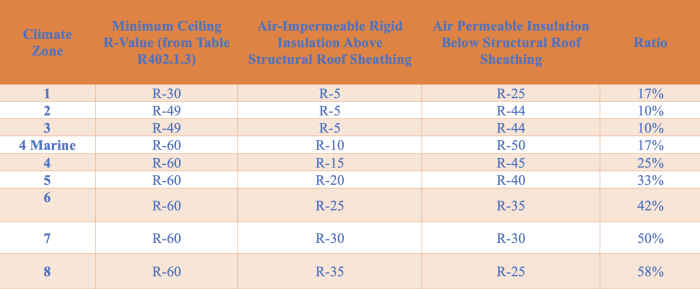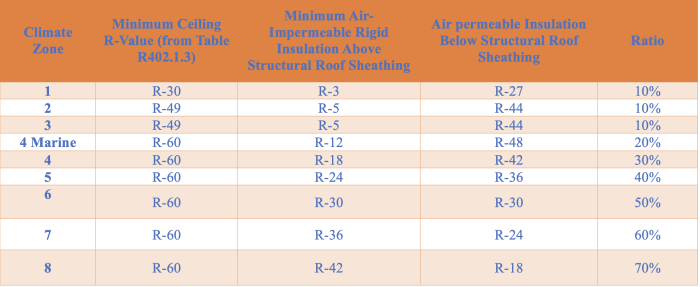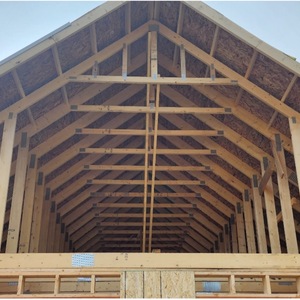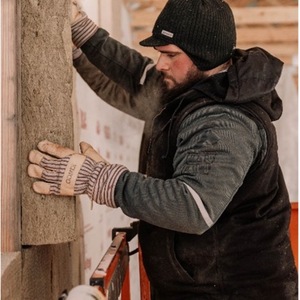
I’m working on a future article for Green Building Advisor whose working title is “Problems with Attic Trusses.” While researching for the piece, I found myself reviewing the ratio rules for hybrid roof insulation strategies. GBA has two good articles on the topic:
Combining Exterior Rigid Foam with Fluffy Insulation by Martin Holiday
The Ratio Rule for Hybrid Roof Insulation by Allison Bailes
The intent for my article is to update the information in these two articles based on the 2021 IRC codes, specifically the increase in the ceiling insulation R-values. Here is the table I created for the article:

When I compared this table to the information in the two GBA articles, I saw the ratios were wrong. With the change in table R402.1.3 in the 2021 energy code, there should have been an adjustment made to table R806.5 as well; but the table is the same as in the 2018 IRC.
An expert’s take
To be sure the discovery was indeed a problem, I reached out to Kohta Ueno at Building Science Corporation. Kohta emailed me back with some interesting information:
“Quick back story: Joe Lstiburek originally wanted to write the unvented roof code using ratios but the code officials/code writers said, “Nope, it has to be a table.” (The dumb is kind of painful sometimes.) And so, we have the table of air-impermeable insulation R-values provided in R806.5.
Those R-values were sufficient to result in “safe” insulation ratios for the energy code–mandated roof R-values at the time, and are seen starting with the 2007 IRC Supplement, and officially included in the 2009 I codes (originally in R806.4, now R806.5).
There is nobody paying for ‘ongoing maintenance’ of code requirements, so this table has remained unchanged even though the I Code roof R-values have changed. Also, the R806.5 table never addressed the possibility of people ‘superinsulating’ roofs while still relying on the code-mandated air-impermeable insulation—spray foam or exterior insulation—R-values.
The ratios presented in BSI-100 are what I would trust to keep out of trouble.
Note that there is a ‘math-based’ method for calculating the ratios—take the average of the three coldest month temperatures for outside conditions and use 68°F for inside. Then calculate whether the ‘interface’ temperature between the two insulation materials remains above 45°F (safe) or drops below 45°F (unsafe). This is covered in R806.5.1.4, but I am guessing that nobody has ever done that calculation. It is an old-school method dating to the1960s, and it is relatively conservative, compared to a WUFI simulation, for instance.”
The takeaway
If you are using a combination of air-impermeable insulation above the roof sheathing, with air-permeable insulation below the roof sheathing, follow Joe Lstiburek’s ratio advice. This updated table shows the needed R-values based on climate zone:

I’ve heard that the R-value requirements in the 2024 energy code are going to relax back to the 2018 values. There are still several states, including my home state of Minnesota, that are looking to, or have already adopted the 2021 energy code, making the above table relevant for the next several years. I’m unsure how best to get information like this to the architects, designers, contractors, and homeowners that need it. Luckily, we have sites like Green Building Advisor to help share the knowledge.
____________________________________________________________________
Randy Williams is a builder and energy rater based in Grand Rapids, Minnesota.
Weekly Newsletter
Get building science and energy efficiency advice, plus special offers, in your inbox.















7 Comments
Something to keep in mind - it is now 2024 and the draft IRC2024 is well underway. It reduces insulation levels back to what we had in 2018.
If I had the ear of my local building authority I would be encouraging them to skip the 2021 cycle and adopt 2024 as soon as it is finalized. It seems ridiculous to jump up for 1 code cycle and then go back again. I'm not privy to the discussions going on in the code committees but somebody must have remembered that code values are MINIMUM values and R-60 MINIMUM in most of the USA is not the best use of resources.
Here's a link to the relevant draft 2024:
https://www.iccsafe.org/wp-content/uploads/IECC2024-PCD1-102022.pdf
Also worth adding a reminder that in Climate Zone 1, 2, and 3 an alternative to exterior insulation is to add a vapor diffusion port. https://www.greenbuildingadvisor.com/article/vapor-diffusion-ports
I was just looking at that this morning. The R806.5 table is referenced from Section 5.1, but section 5.2 is an alternative.
https://codes.iccsafe.org/s/THPOTIRC2021P1/chapter-8-roof-ceiling-construction/THPOTIRC2021P1-Pt03-Ch08-SecR806.5
The code says "either Item 5.1 or 5.2". 5.1 creates the requirement for continuous exterior insulation above the sheathing, referencing Table R806.5. The alternative, section 5.2, does not (just a vapor diffusion port). 5.2.9 confirms that _if_ you use impermeable insulation it is "not required to meet the R-value in Table R806.5".
So the ratio in CZ 1, 2, and 3 could be 0% exterior, if a vapor diffusion port is used.
Do I have that right?
Randy this is great stuff! As usual!
Anyone working with R-60 should up their air-impermeable insulation.
I will note that in many cases, less than R-60 is code-acceptable:
--whenever the full height of uncompressed insulation extends all the way over the top plates, R-49 may be substituted for R-60 (N1102.2.1/R402.2.1)
--in a "cathedral" assembly without room for required insulation more than R-30, there isn't room for the required insulation, and the insulation extends over the top plate and isn't compressed, R-30 is the requirement. This is limited to 500sf or 20% of total insulated ceiling area. (N1102.2.2/R402.2.2)
Do you find yourself installing R60 much? Pretty rare for us, though it does happen, so far not in an unvented assembly we'd need to refer to these insulation ratios for.
Another thing, I tried to check on an assembly using the "45 degrees at 68 interior/average of three coldest months" method, and got hung up trying to find average temperatures lol.
I always liked the term "first condensing surface" & the concept of keeping the first condensing surface above the dew point to control vapor from condensing to water within a wall or roof assembly ...
be greener,
Joe Lstuburek makes the distinction between the "first condensing surface", and the "first condensing surface of interest". It sounds like a distinction without a difference, but it is quite useful:
https://buildingscience.com/documents/insights/bsi-049-confusion-about-diffusion
Hi Malcom!
So if I understand Joe's point here (thx for the refresher/it's been awhile), in the wall assembly with fiberglass (figure 1/photo 1) the "first condensing surface" is actually in the FG itself, but the "first condensing surface of interest" is the back of the sheathing ...
Correct?
begreener,
Yes. I think he is making the distinction between surfaces where the dew point may cause condensation (like in batt insulation) - but there a no consequences, and ones (like exterior sheathing) where it is of interest because it causes problems. That we don't need to worry about the former, only the latter.
Log in or create an account to post a comment.
Sign up Log in